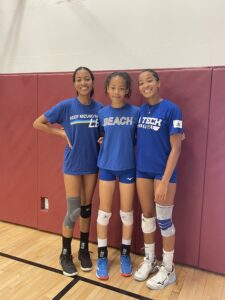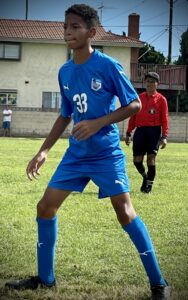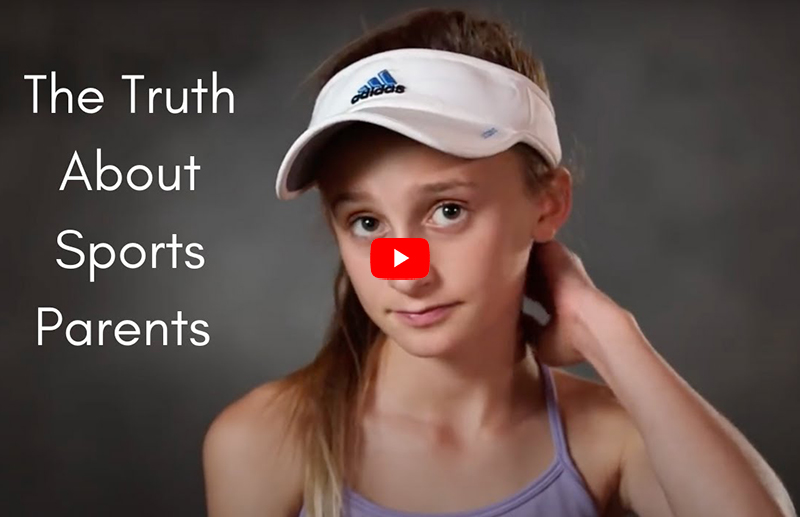
Looking At Sports Parents’ Sideline Behavior Through A Different Lens
Looking At Sports Parents’ Sideline Behavior Through A Different Lens
by Aviss Bell
ABA is the applied science of learning and behavior change and is most often used in Autism Early Intervention, but it’s my belief and my goal to use it to help youth sports parents. Really, it can be used with everything we do because everything a person does is considered behavior. I have a master’s degree in Applied Behavior Analysis with an emphasis on sports and have worked in the field of ABA for over 15 years. I’m also a sports mom with 4 kids-2 youth athletes and two collegiate-level volleyball athletes. I am passionate about parents’ involvement in youth sports and how it can influence the experience of both kids and adults.
The psychology behind the interactions between parent and child and the effects on performance and enjoyment fascinate me. Sometimes, parents aren’t even aware of how their behavior can affect their young athletes. I think sometimes, we might be so focused on the outcome of the competition that we forget to look at ourselves, our actions, and our motivations. Enter ABA!
9 Habits of Highly Effective Team Players
I often find myself watching the parents just as much as I watch the action on the court or pitch. I notice their body language, gestures, and expressions when their child performs well and when they make a mistake. I often reflect on how my own behavior (the things I do and say) affects my kids’ experiences in their sports. Sports parents’ negative behavior can lead to many issues for both parents and children and can even negatively impact the relationship between the two. Some of these negative behaviors include coaching or giving instructions from the sideline, using aggressive language during competition, only showing love or positive reinforcement when the young athlete is playing well, or applying pressure on the young athlete to perform well. Many of us want to change some of these behaviors to improve our experiences with our athletes but aren’t sure how. On the positive side, parents may want to increase certain behaviors. Positive behaviors can include smiling and cheering from the sideline, making positive comments after games regardless of the outcome, or speaking positively about the coaches and other players.
Sometimes, we aren’t even aware of how our behavior can affect our young athletes. Once, after a volleyball match, my daughter asked me why I was making “that face” while the team was playing. I had no idea that I was making any face at all! I think sometimes; we might be so focused on the outcome of the competition that we forget to look at ourselves, our actions, and our motivations and how they might affect our athletes. Enter ABA! With just a few steps, parents can be on their way to improved sports experiences, relationships, and interactions with their athletes.
What, Why, Track, Change
What: From an ABA standpoint, it’s important first to determine what behaviors we might want to change. We need to define them clearly. Also, is the behavior something we want to increase or decrease? Here are a few examples of some well-defined behaviors:
Asking her what the coach said when she gets back in the car
Putting my head down when he makes a mistake
Yelling instructions from the sideline
Nodding encouragement when she makes a mistake
Keeping a neutral expression when he gets pulled out of the game
The behavior that I first wanted to change for myself was “that face.” After my daughter asked me that question, I made it a point to pay attention to what I was doing with my face during the competition, and I noticed that I would grimace when she made a mistake or when she came out of the game. How did she notice that when I didn’t even realize I was doing it?! I needed to change that behavior.
Why: Once a particular behavior identified for change is defined, we can start thinking about why it’s happening-what purpose it might be serving. In ABA, we call this looking at the function of the behavior. Without going too deeply into the subject (more later), I can tell you that behaviors have 4 possible functions.
Sensory/Automatic (it just feels good-instant gratification)
Escape (to avoid or get away from something)
Attention (to get attention from others)
Tangible (to obtain something/item)
Knowing these possible functions can give insight into the reasons some of these negative behaviors are happening. This is an important step! I determined that my grimacing behavior served an automatic function. When she hit a ball into the net or hit it out, I Felt. It. and my face showed it.
Track: In the ABA world tracking/counting behavior is crucial. Now that we’ve defined and figured out the function of the behaviors we want to change, now it’s time to count them to determine how often it’s happening. There are many ways to do this; for example, you can mentally tally or write down how many times per week or per competition you’re engaging in these behaviors. This will give you an idea of how much it’s happening before you work to change them. I took mental count of my “grimace face” and determined that it was happening anytime a mistake was made on the court, even if it wasn’t my daughter who made the mistake.
Change: Now, the fun part. In this step, we consciously apply a technique to reduce the number of negative behaviors or increase the number of positive behaviors that we’ve identified.
There are too many techniques in ABA that are used to change behavior to mention here, but here are a few. We can go into more depth on them another time.
Positive and Negative reinforcement
Goal Setting
Token systems
Self-Monitoring
Public Posting
Behavior Contracts
I really wanted to decrease my grimacing behavior, so the next day the team played, I decided to choose a replacement behavior (nodding) and self-monitoring with a goal-setting technique. At the beginning of every match, I set the goal that I would use my replacement behavior at least 10 times during the match when a mistake was made. Each match after that, I increased my goal until I was no longer grimacing (and nodding instead) whenever a mistake was made on the court. No more “that face”!
While we are practicing the chosen technique on the defined behavior, we want to continue to track the behavior that we’re trying to change. This way, we can tell if the chosen technique is making a difference in increasing or decreasing the behavior. My goal-setting technique and self-monitoring seemed to work.
These very basic ABA principles provide a systematic way to target just about any behavior for improvement. Overall, Applied Behavior Analysis can provide us with a way to improve our interactions and experiences in youth sports and our relationships with our young athletes.

More Articles From Ilovetowatchyouplay.com
Confessions of a Club Soccer Player
A Father’s Ode To His Son’s Final Game
My Daughter Quit Youth Sports And This Is What Sports Parents Need To Know
There’s Something Different About High School Sports













